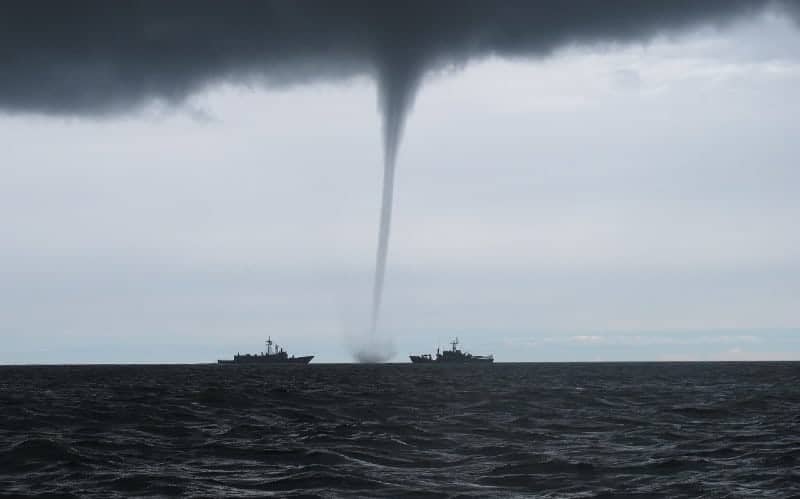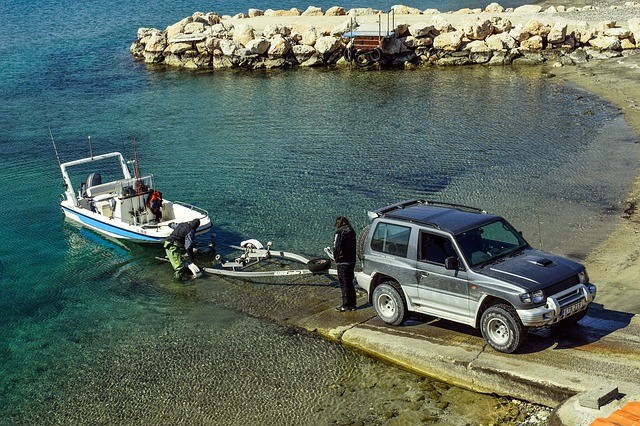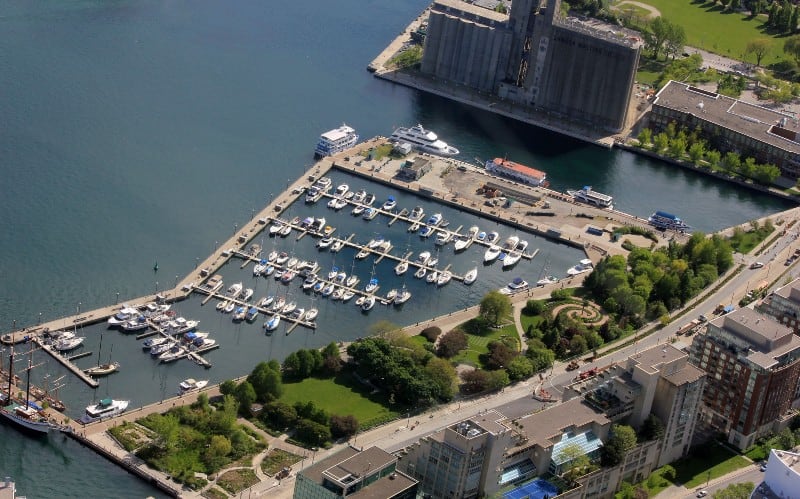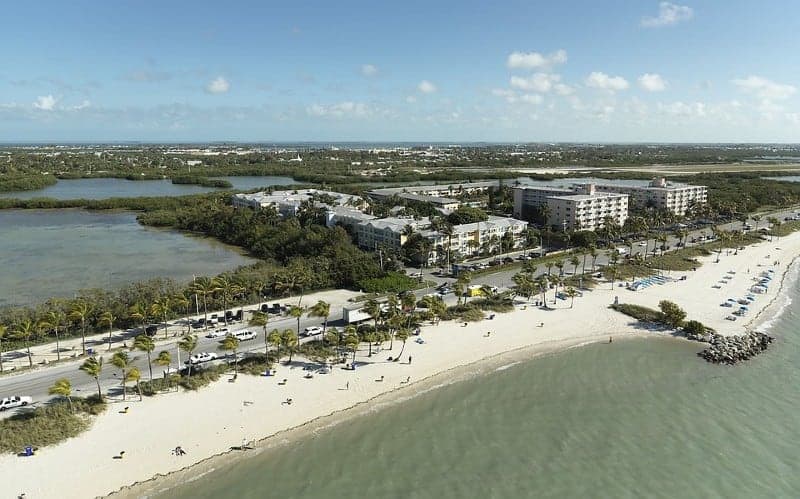How to Prepare Your Boat for a Hurricane
Keeping safe on the water is no easy task. Storm clouds and hurricanes are always a risk. Boats need to be ready. How you prepare depends on where you plan to store your boat. Also on how much time you have ahead of the hurricane. As always, ensure your own safety first.
Learning how to navigate around potential disasters is one thing. But when a storm comes in, it cannot be avoided. As a boat owner, you need to know how to prepare your boat to weather any storm. Especially the most severe ones. A storm of this magnitude is no joke.
Hurricane season is going to shop up every year, like it or not. But a good hurricane plan can secure your boat. It can help keep your boat on the water instead of under it. And, potentially, minimize your insurance risk. Let’s take a look at how to prepare your boat for a hurricane with a hurricane plan.
Hurricane Preparation Checklist
You can prepare your boat for hurricane season by following this checklist. You don’t want to wait until you’re in the middle of a storm surge. Have a hurricane hole at the ready if possible and be prepared by doing the following.
REMEMBER: If local authorities have issued an evacuation order, do so. No boat is worth your life. Better to lose your vessel and file an insurance claim than to lose your life.
- Be familiar with your marine insurance. Storms are unpredictable, but insurance policies should be clear. Your policy may have certain requirements you need to meet. More than one boater has found out too late that their insurance policies didn’t cover storm damage. This is often because they didn’t follow the necessary steps. Read all the information you have available in advance.
- Inventory the contents of your boat. Your boat insurance policy may require this. Take pictures or video as evidence in case things are damaged or lost. The more information for your insurance agent, the better.
- Keep important information in a secure and easily moved location. A waterproof, floating lockbox is ideal for this on any boat. Make copies or document these items as part of your equipment inventory as well. This includes:
- Insurance policy
- Boat registration
- Radio license
- Marina rental agreement
- Be familiar with marina policies. You may be able to dock boats at your marina berth. But you may also have to remove your boat to a new location entirely. If this is the case, you’ll need some kind of hurricane hole for your boat.
- Have a plan for how and when to move your boat if it needs to be transported. Know the roads you’ll take and where you plan to store it.
- Be familiar with local storm surge history and elevation. If flooding is common, you need to know when and where to expect it.
- Make sure you have an evacuation plan and know the safest routes to get there.
Preparing to Move Your Boat Before a Hurricane
Hurricanes move fast. Typically, you will not have much more than 24 hours notice that a hurricane is approaching. Sometimes far less. You will need to act fast if you have someone to store your boat away from storm surges and flood waters.
- Inspect your trailer. Make sure it is in good working order. Do a full trailer inspection. That means tires, wheel bearings, tow hitch, and lights. You don’t want any surprises.
- Secure your boat and trailer in a garage, if at all possible.
- If a garage is not an option, secure them to strong trees.
- Use concrete deadman anchors if trees are not an option.
- Remove everything that has the potential to come off in hurricane-force winds. Remember, these can pull siding from buildings.
- If your boat is an outboard, you can increase its weight by filing it with fresh water and leaving the drain plug in. Do not do this with an inboard, as it will ruin the engine.
- Place wood blocks between the trailer frame and springs to add support.
Emergency Hurricane Preparation On the Water
It’s all fine and good to prepare a boat in anticipation of hurricane season. But what if there’s no time to get the boat out of the water? What if the boat is your home? Then you need to adapt your approach. If you are unable to take your boat out of the water, you are not out of options. A marina berth may be able to keep your boat safe from hurricanes.
Regardless of where you moor your boat, if it’s on the water, follow these steps.
- Find a marina berth with sturdy pilings
- Look for a marina berth that is suited to protect against open water and storm surge
- Tie down or remove/secure any loose items on the boat. These could all cause extra damage or injury.
- Cover lines with chafe protectors. You can use double neoprene garden hose cut lengthwise to slip over the dock lines.
- Anchor your vessel in a protected harbor. This can help prevent collisions with docks and other boats. You will need extra anchors and heavier anchors. Extra line for the anchors is required to allow a scope of at least 10:1 for each anchor.
- Prevent your sails from ballooning by wrapping lines around them.
- Keep your vessel on a secure mooring if possible.
- All connections to the mooring should go through a swivel. Dock lines that are not connected through a swivel have a greater chance of breaking.
- Every line should be secured to a different cleat or sampson post.
- Add chains to the mooring/boat connection with a loop in the chain that has a nylon spring attached to the vessel. This helps absorb shock.
- Add 2 nylon lines from the mooring to the boat. You should have 3 lines in total. Nylon lines are a good idea to stand up to wind and the heavy load of your boat.
- The lines from the mooring to the vessel should be 50% longer than usual. This will help accommodate tidal surge.
- Inspect all hatches, portholes, and dorade boxes for potential leaks.
- Make sure the engine is ready for easy start in an emergency
- Make sure bilge pumps are working. This goes for electric bilge pumps or manual bilge pumps.
- Make sure you install fenders around your vessel. These prevent damage from pilings and other boats. Sometimes fender boards will be in order. The more fenders the better.
- Keep your radio on for up to the minute weather information
ABOVE ALL ELSE LISTEN TO INSTRUCTIONS. If the marina or local officials tell you that you need to evacuate, then you should do this, even if you live on the vessel. Getting off the water is always the safest choice when dealing with a hurricane.
What is a Hurricane Hole?
Ideally, if your vessel is staying on the water with you in it, then you want to be in a hurricane hole. These is a protected area located far inland that can avoid surge and winds. They are ringed by protective mangroves and offer coverage and protection . However, they are rare and not always tested. The Caribbean is known for having once had a number of hurricane holes.
If you know of a narrow cove or inlet like this, it could be suited to protecting a boat. These must be scouted ahead of time. The odds on finding a suitable spot that will be far enough inland to work on short notice are slim.
Tips to Remember
First and foremost, do not stay on your boat. Some people will tell you that you can weather the storm. Some people have done so successfully in the past. It’s not worth the risk. Every storm is different. If you survived last time, there’s no guarantee about the next time.
Never stay on the boat. Follow our guidelines and tie down or remove as much as you can. Take all documents and valuable devices in a secure way with you when you leave. Any property left behind may be lost.
Be prepared for your preparations to not work. No matter how many precautions you put into saving a boat, a hurricane is always the more powerful force. If your boat ends up in the path, it could be destroyed. If this happens, make sure you have documented everything that was on board. Be up to date with your insurance. Contact your agent about your insurance policy as soon as it is reasonable to do so.
The better you plan, the more likely you and your boat are to make it through any storm in one piece.
Categories: Boats, nauticalknowhow
















